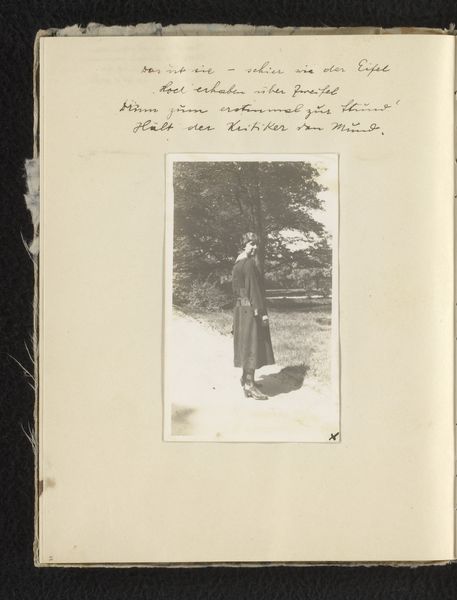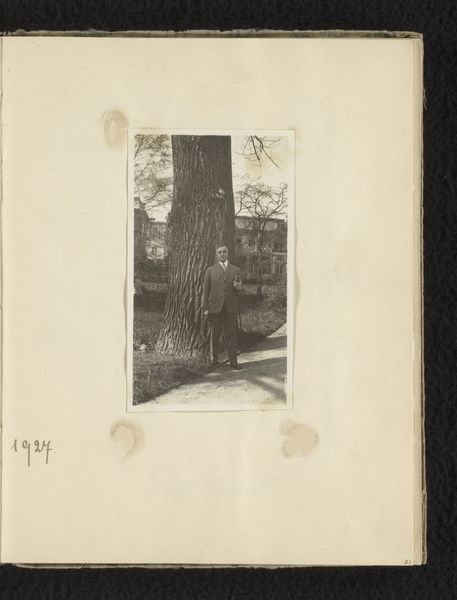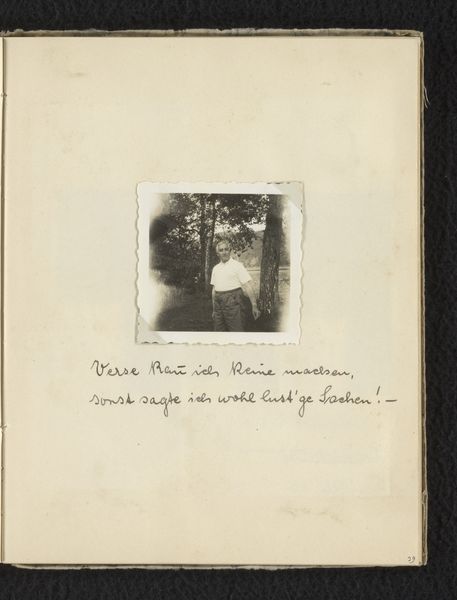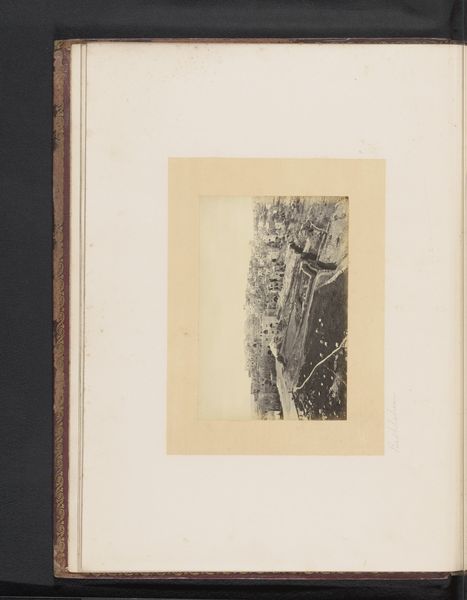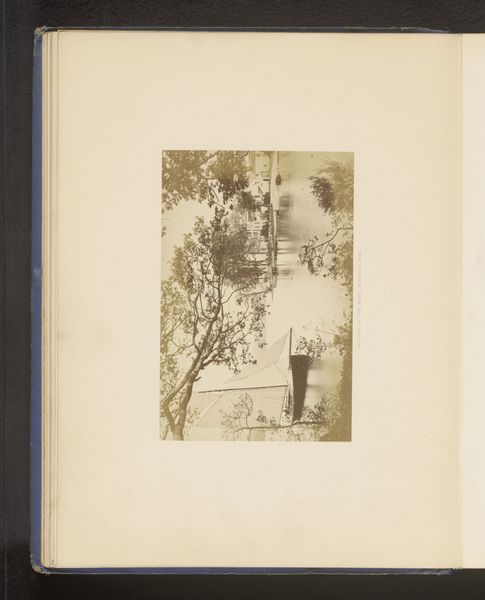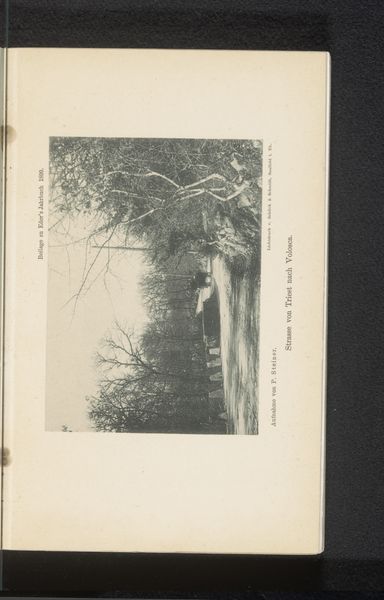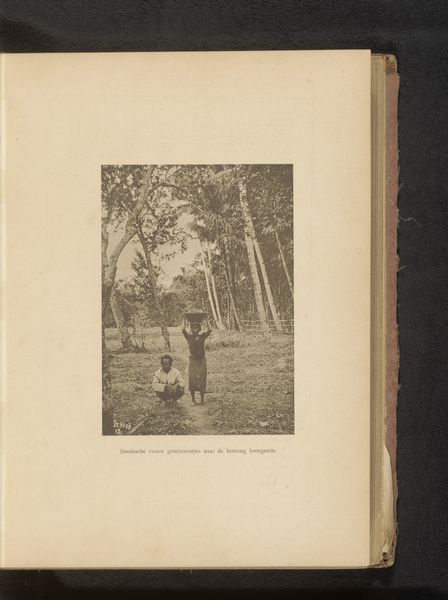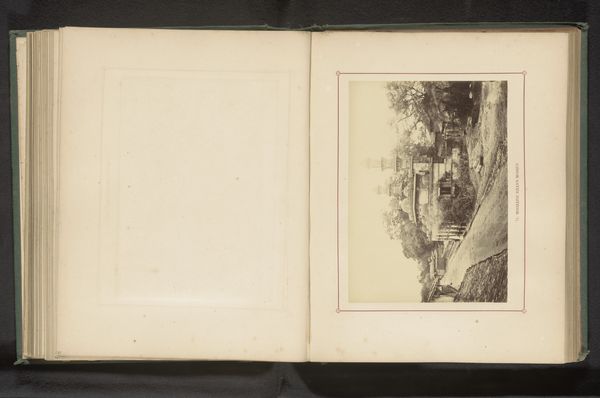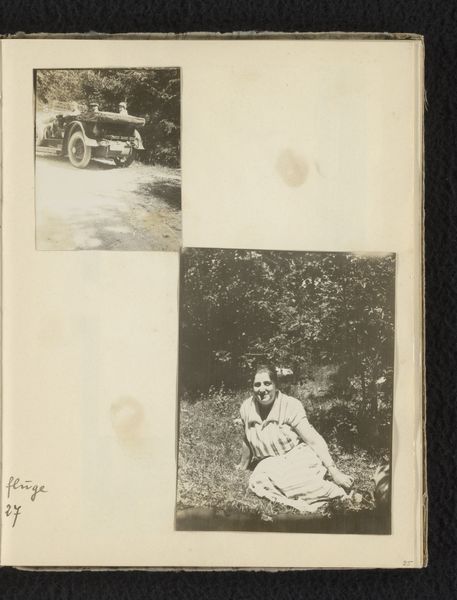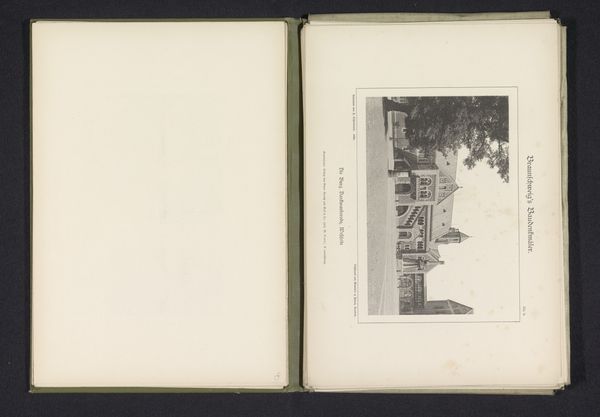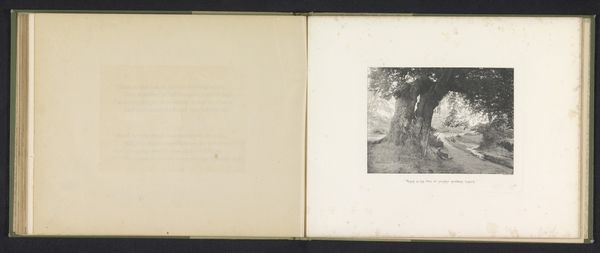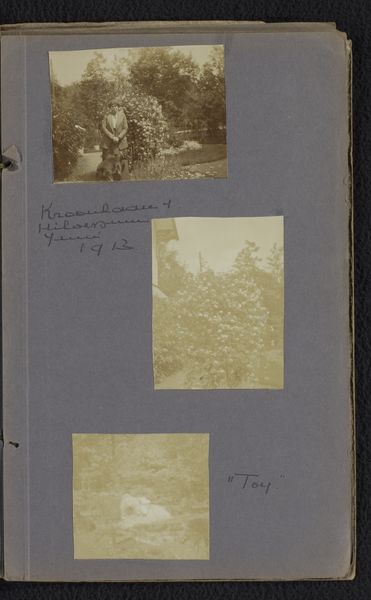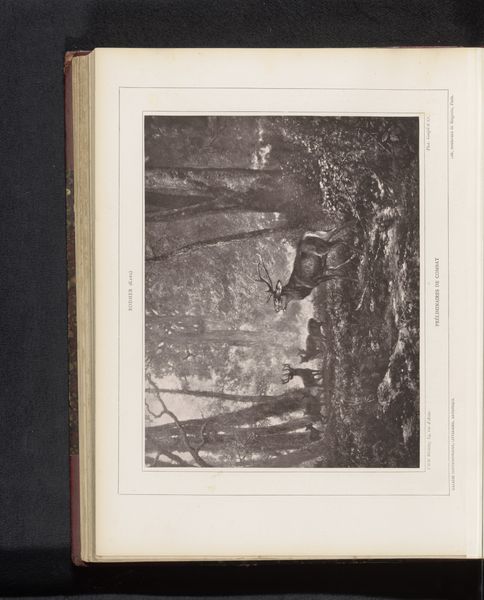
Eugen Wachenheimer in de openlucht tijdens zijn verlovingstijd, 1920-1922, Duitsland 1920 - 1922
0:00
0:00
photography
#
portrait
#
aged paper
#
homemade paper
#
paperlike
#
sketch book
#
personal journal design
#
german-expressionism
#
photography
#
personal sketchbook
#
journal
#
thick font
#
paper medium
#
historical font
Dimensions: height 110 mm, width 65 mm, height 205 mm, width 160 mm, length 205 mm, width 165 mm
Copyright: Rijks Museum: Open Domain
Editor: So, here we have a photograph from 1920-1922, titled "Eugen Wachenheimer in de openlucht tijdens zijn verlovingstijd, 1920-1922, Duitsland," as part of the Familie Wachenheimer collection. It's like a snapshot nestled within what looks like a personal journal. The black and white image has such a wistful air. What strikes you when you look at this piece? Curator: The immediate symbolism is of a time capsule, isn't it? This isn't just a portrait; it's a fragment of memory deliberately preserved. The handwritten script surrounding the photograph – do we know what it says? The placement, the visible binding…it suggests a conscious act of memorializing a specific moment in time, his engagement period. It prompts questions about the nature of memory, both individual and collective. What does the open-air setting signify to you, compared to a studio portrait? Editor: The outdoor setting feels more… authentic? Less posed, more intimate somehow. Do you think that intimacy was the intention? Curator: Perhaps. Or perhaps the ‘open air’ acts as a symbolic contrast to the societal constraints brewing in Germany at that time. Notice how the text appears almost like runes framing the central figure. What meanings could these words layered above the image have? Is the choice of this particular script – the "thick font" as the tags indicate – intentionally invoking a sense of history, or is it simply the everyday handwriting of the author? Editor: It does feel like a kind of… encoding, adding layers to the story. The fragility of the paper, the fading of the photograph, it all amplifies that sense of a precious memory being carefully guarded. Curator: Precisely. The whole assemblage functions as a powerful symbol of love and loss against the backdrop of looming historical upheaval. This photograph is a coded message about memory’s persistence against time and turmoil. Editor: I hadn't considered it in that light. It definitely gives the portrait a new weight, knowing it exists within that historical context.
Comments
No comments
Be the first to comment and join the conversation on the ultimate creative platform.
